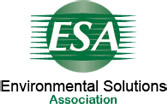FAQ’s
What is mold?
Molds are fungi, simple microscopic plants. Mildew is a thin, black, or sometimes white, growth produced by mold. There are thousands species of molds. Outdoors, they live in the soil and help in the breakdown of organic matter. Molds grow indoors on virtually any substance when moisture is present. Molds can usually be detected by a musty odor. They produce mold spores (seeds), which waft in the air throughout the house, forming new colonies wherever they land. They grow on paper products, cardboard, ceiling tiles, wood products, paints, wallpaper, insulation materials, drywall, carpet, and fabric. Molds flourish in damp areas like crawl spaces, basements, bathrooms (especially shower stalls), air conditioners, humidifiers, clothing closets, refrigerator drip trays, house plants, garbage pails, mattresses, upholstered furniture, and often in new houses because of high moisture in the building materials.
How does mold cause health issues?
Exposure to molds occurs when people inhale mold spores. Mold spores are so small that they evade the protective mechanisms of the nose and upper respiratory tract. Although thousands of molds exist, only a few dozen are significant allergens. They aggravate or cause allergies and asthma, particularly, in children. The incidence of allergies and asthma has doubled in the last decade, which has been linked to the increase in air-borne molds in modern energy-efficient homes. One of five Americans suffers from allergies. The other common effects of exposure to molds include nasal stuffiness, eye irritation, wheezing, flu like symptoms, chronic sinus infections, rashes, nosebleeds, fever, shortness of breath, headaches, dizziness, inability to concentrate, fatigue, and respiratory infections. Some pathogenic molds effect the central nervous system or suppress the immune system.
What is “Black Mold”
“Toxic “black molds” in homes and schools have caused public alarm. Some schools and many private homes had to be evacuated. Homeowners have lost their homes, because insurance companies normally do not cover this misfortune. There is actually a number of mold types that are black in color or produce black pigments. Such mold growths are common in houses, particularly in bathrooms and basements. The black molds known to produce mycotoxins include Stachybotrys and Memnoniella. Stachybotrys is a greenish-black mold that grows on materials with a high cellulose content, such as drywall sheetrock, dropped ceiling tiles, and wood that become chronically moist, due to excessive humidity, water leaks, or flooding. Stachybotrys can cause nervous system symptoms such as personality changes, sleep disorders, and
memory loss.
Why Inspect For Mold?
There are numerous reasons to inspect your property for mold. First of all, mold is everywhere. There is no escaping it. Though mold is not problematic by default, when indoor mold exceeds levels typically found outdoors, a number of serious problems can occur. Whether your house was inspected for mold before you moved in, or had an inspection less than one year ago, you should be aware that mold can begin at any time and anywhere, no matter how clean you keep your casa. If you haven’t had an inspection within the last 18 months, now might be the perfect time to have a professional mold inspection even if there are no visible signs.
What does a Mold Inspector do?
When the inspector arrives at the property location, he performs a thorough visual inspection of the property. The visual inspection for the area outside of the property consists of:
- Inspecting the foundation of the property for cracks
- Inspecting any cracks on the property itself
- Inspecting the grading of the property
- Inspecting the drainage spouts and making sure they draining away from the house
- Inspect sprinklers, if applicable, to ensure they are not spraying on the house
- Inspect shrubbery to ensure they have adequate spacing from them to the foundation
- Inspect windows and doors to ensure proper caulking and sealing
- Inspect roofing for missing or damaged shingles
- Inspect house or dwelling for visible water damage or staining of building materials which could lead to possible inside water intrusion
The visual inspection for the area inside of the property consists of:
- Inspecting all areas inside the property or (only areas the client allocates)
- Inspecting each wall from ceiling to flooring
- Inspecting the HVAC system, including coils, supply and return vents as well as visible duct work.
- Inspecting all areas with moisture meters, temperature, and humidity readings.
The inspector will take samples of the mold, airborne or surface and send them to a professional CERTIFIED laboratory. Tape/Bulk/Swab (taking samples of the visible mold):
- Air Sample (taking non-visible air spores)
- • Tape sample
- • Sterilized Swab
- • Inner Wall Air Sample if no visible mold is present and moisture readings are high
Also available at additional cost:
- Viable sampling ( used for culturing to determine exact species of growth )
The laboratory results will take approximately 24 to 72 hours. When the results are given to Mold Institute USA, we immediately complete a full detailed report and hand deliver a copy of the results to the client with a letter explaining what molds were found.
What are some of the signs of Mold?
- Stained ceiling tiles (you may be very surprised as to what may be growing underneath) or walls.
- Musty, earthy, or urine scented odor.
- Black, brown, orange, pink, or green speckled walls or around any plumbing grout or tile.
- Deficient siding, siding that is not covering a building adequately, or which may not be installed properly o not weather protected in lumberyards and prior or during construction, and the wood becoming moist due to water intrusion, humidity, etc.
- Wood siding and Stucco where the paint has cracked and water has intruded (poor maintenance).
- Mild to severe unexplained illness, in combination with any other building problems listed on this page.
- Swollen or crumbling walls or buckling floor boards.
- Sewer backup which has caused water harm.
- Leaky roof or flashing installed improperly.
- Flood or hurricane damage.
- Leaky window or door.
- Washing machine overflow, washing machine leaks such as drain valve phalanges, leaky gaskets, etc.
- leaky toilet seal or bathtub drainage problems.
- Lack of ventilation.
- Relative humidity over 55%.
- Damp basements.
- Disaster damage (hurricane, flood, earthquake, tornado, etc.).







